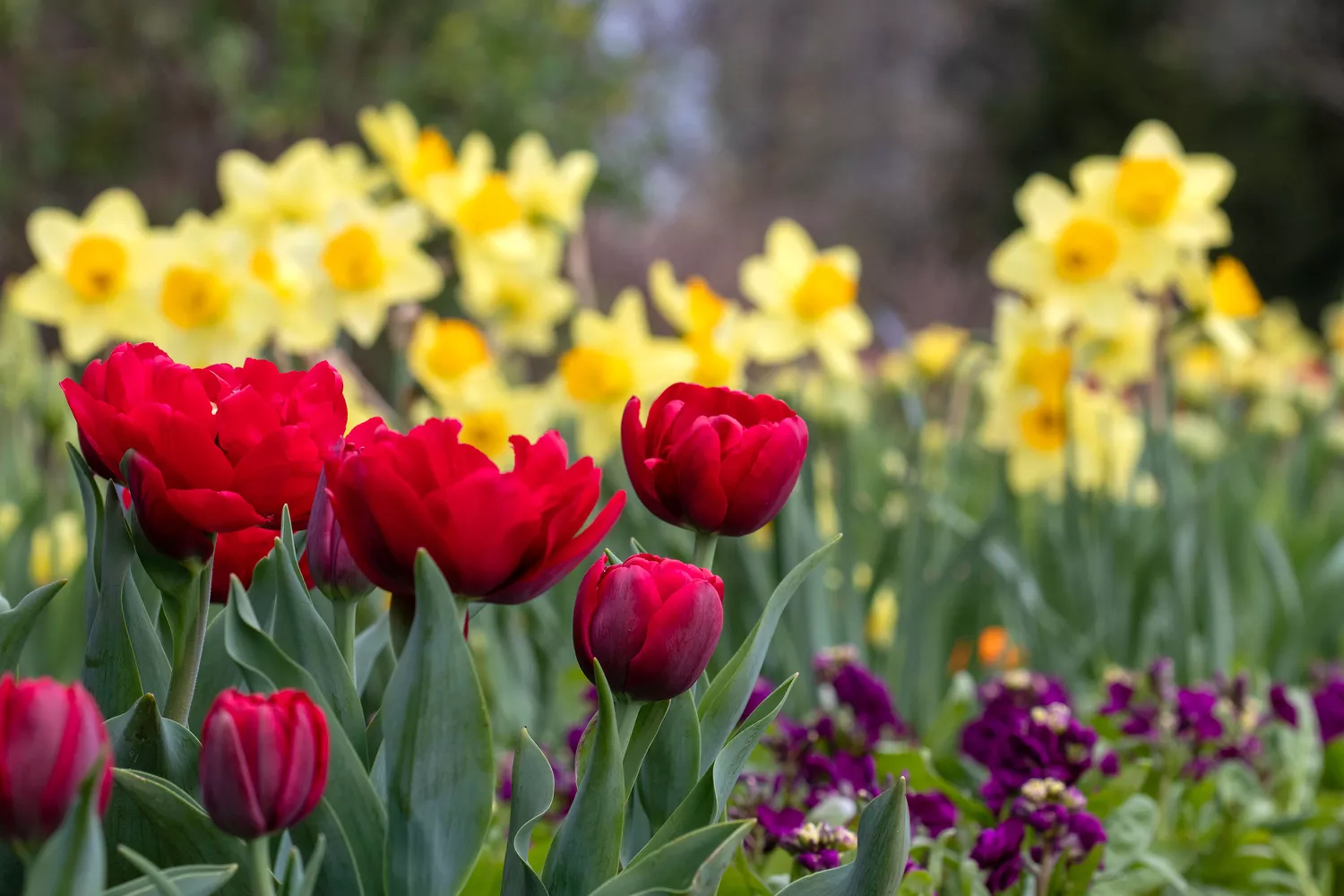
As garden catalogs fill your mailbox, it’s hard not to get excited about spring-blooming bulbs. From classic tulips and daffodils to exotic-looking fritillaria, there are hundreds of bulbs to choose from. However, not all bulbs thrive in the Southeast’s unique growing conditions. We’re here to help you identify the best bulbs to plant in the fall for a gorgeous spring display.
When selecting bulbs, consider bloom timing, especially when combining two or more varieties. Many species include early- and late-blooming cultivars. One planting strategy is to incorporate bulbs that bloom at different times to ensure continuous blooming throughout the spring. You might also consider grouping companion bulbs that bloom in synchrony, such as grape hyacinth and daffodils or winter aconite with snowdrops. Consider flower height and color when combining bulbs.
Tips for planting bulbs
The general rule when planting bulbs is to place them at a depth three times the height of the bulb. Bulbs also have a plus and a minus side. The bottom is usually flatter and may have a small tuft of roots attached or a flattened scar where roots previously grew. Larger bulbs, such as tulips, should be spaced 3 to 6 inches apart, while smaller bulbs can be placed closer together, about 1 to 2 inches apart.
After the plants bloom, allow the foliage to die back naturally. While yellowing foliage can be unsightly, it’s important to leave the leaves in place until they have completely died back. Instead of cutting, try hiding wilted foliage by planting bulbs among summer perennials, under deciduous shrubs, or over bulbs with annuals.
Botanical tulips
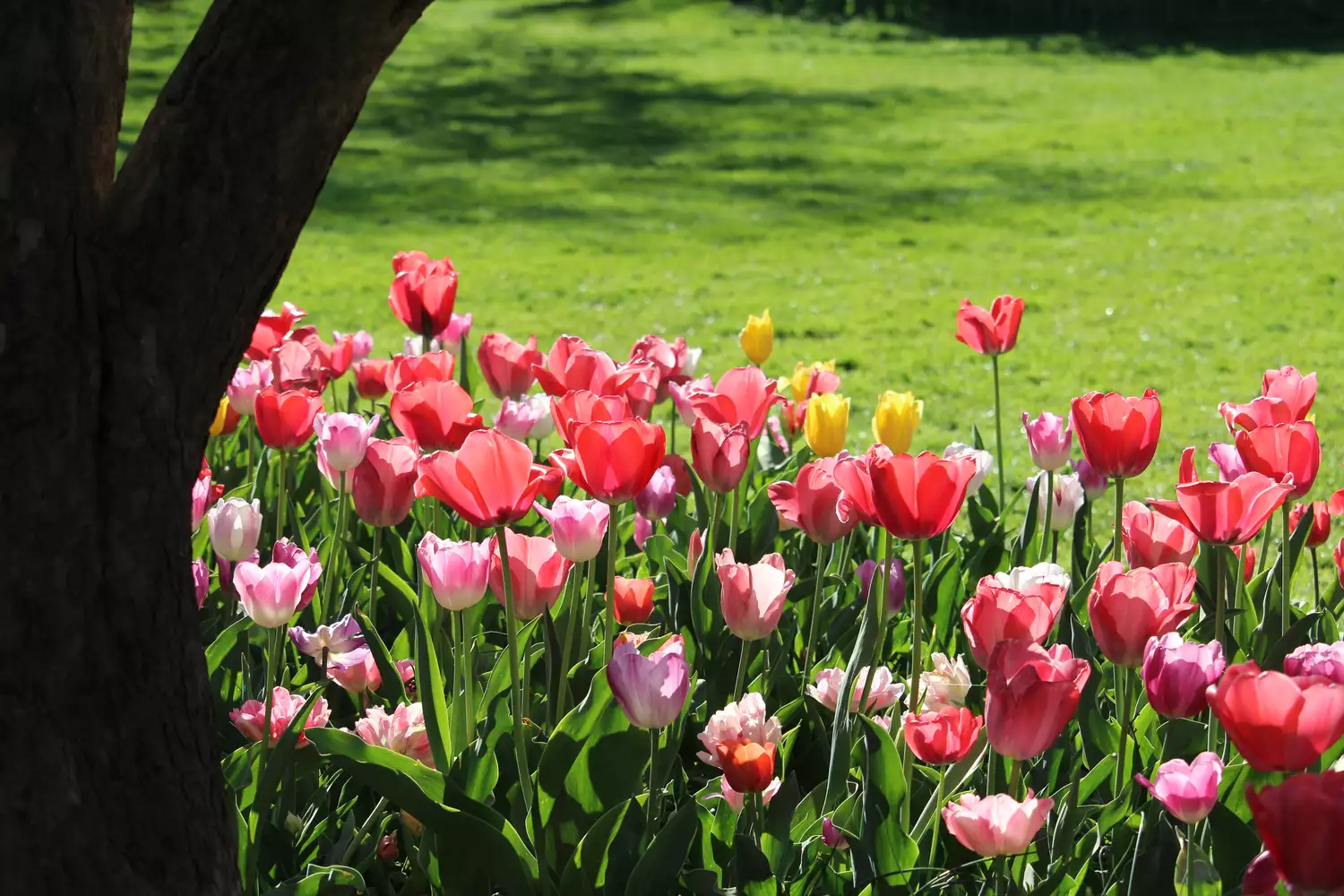
- Botanical name: Tulipa species
- Sun exposure: full sun
- Soil type: moist, well-drained, rich
- Soil pH: Neutral (6.5-7.5)
Many gardeners, especially those working in clay soils, have trouble getting tulips to return each season. The showy hybrids are bred simply for a big show and typically do not perpetuate. If you are looking for tulips that will return year after year, consider planting botanical or species tulips such as Tulipa fosteriana , T. clusiana , T. greigii and T. kaufmanniana . Although not as showy as their hybrid counterparts, species tulips naturalize easily in the garden. Plant them on a berm or in a somewhat dry area in summer to encourage establishment.
Daffodils and jonquils

- Botanical name: Narcissus hybrids.
- Sun Exposure: Full sun to partial shade
- Soil type: average, well-drained
- Soil pH: slightly acidic to neutral (6.0-7.0)
Daffodils are divided into divisions based primarily on form. Jonquil is a division of daffodils well suited to southern gardens and quite tolerant of clay soils. Most have narrow, dark green foliage and wonderfully fragrant flowers. They produce multiple flowers per stem and are very hardy plants. Each cultivar has a slightly different combination of yellow, white, cream and gold. Mix several varieties to create a striking display along the bed.
Ornamental onions

- Botanical name: Allium species and hybrids.
- Sun Exposure: Full sun to partial shade
- Soil type: dry to medium, well drained, medium to rich fertility
- Soil pH: Slightly acidic (5.5-6.5)
Ornamental onions are among the most fun fall-planted bulbs, and many varieties produce large, globe-shaped flowers. Ornamental onions bloom from late spring through summer, mostly in shades of purple, pink, and blue, with some white cultivars available. The flowers attract bees and butterflies, making them an excellent addition to pollinator gardens. Alliums also work well in rock gardens and mixed borders.
Saffron
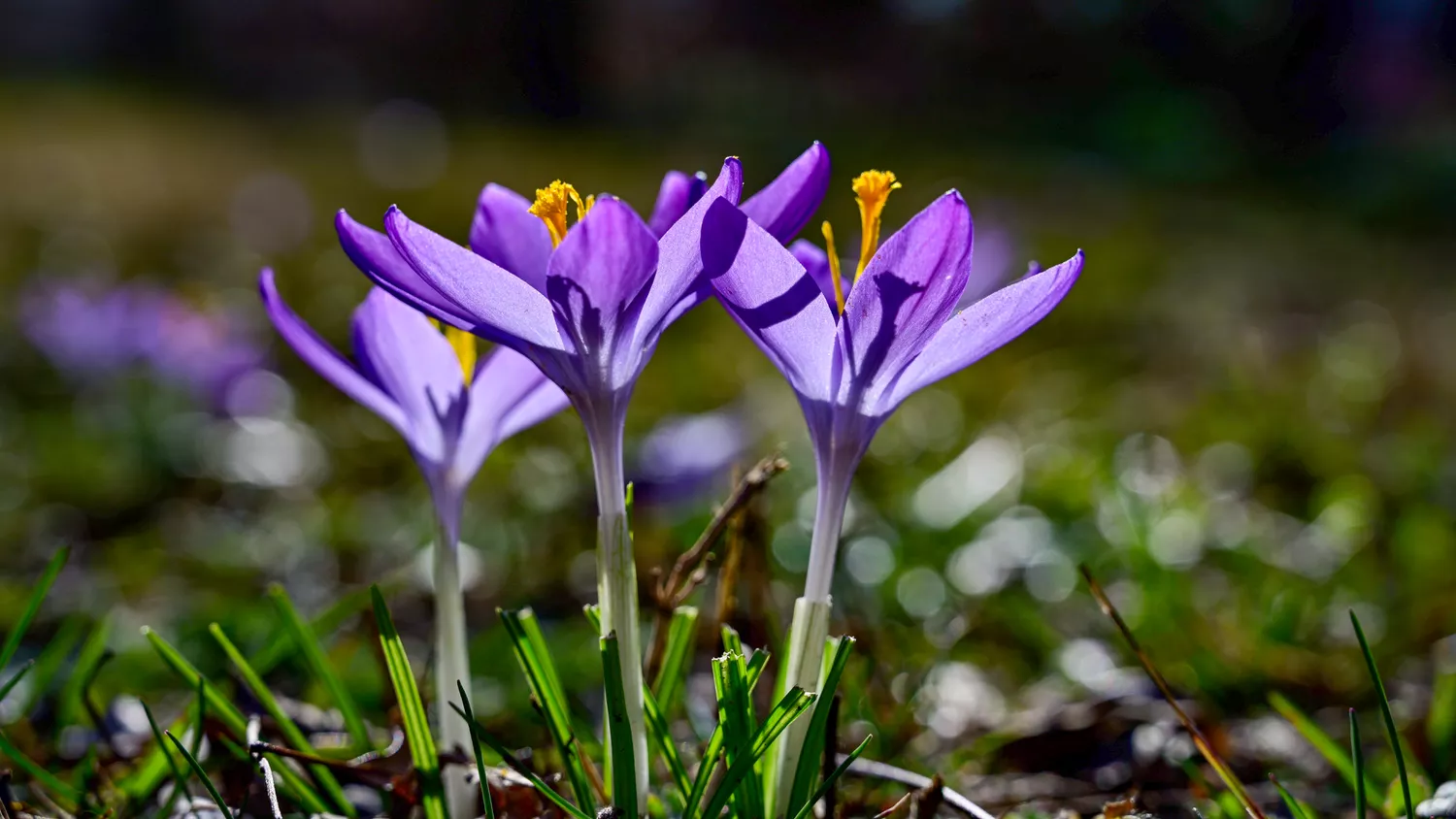
- Botanical name: Crocus species and hybrids.
- Sun Exposure: Full sun to partial shade
- Soil type: medium, well-drained, medium fertility
- Soil pH: slightly acidic to neutral (6.0-7.0)
Crocuses, which bloom in a vibrant yellow or violet, depending on the species, often blossom through a dusting of snow in colder regions. They are usually concentrated in lawns, where the linear foliage disappears among the blades of grass as the flowers fade. Plant crocuses along paths or mass them in woodland gardens and watch as winter-weary bees flock to the flowers.
Winter Aconite
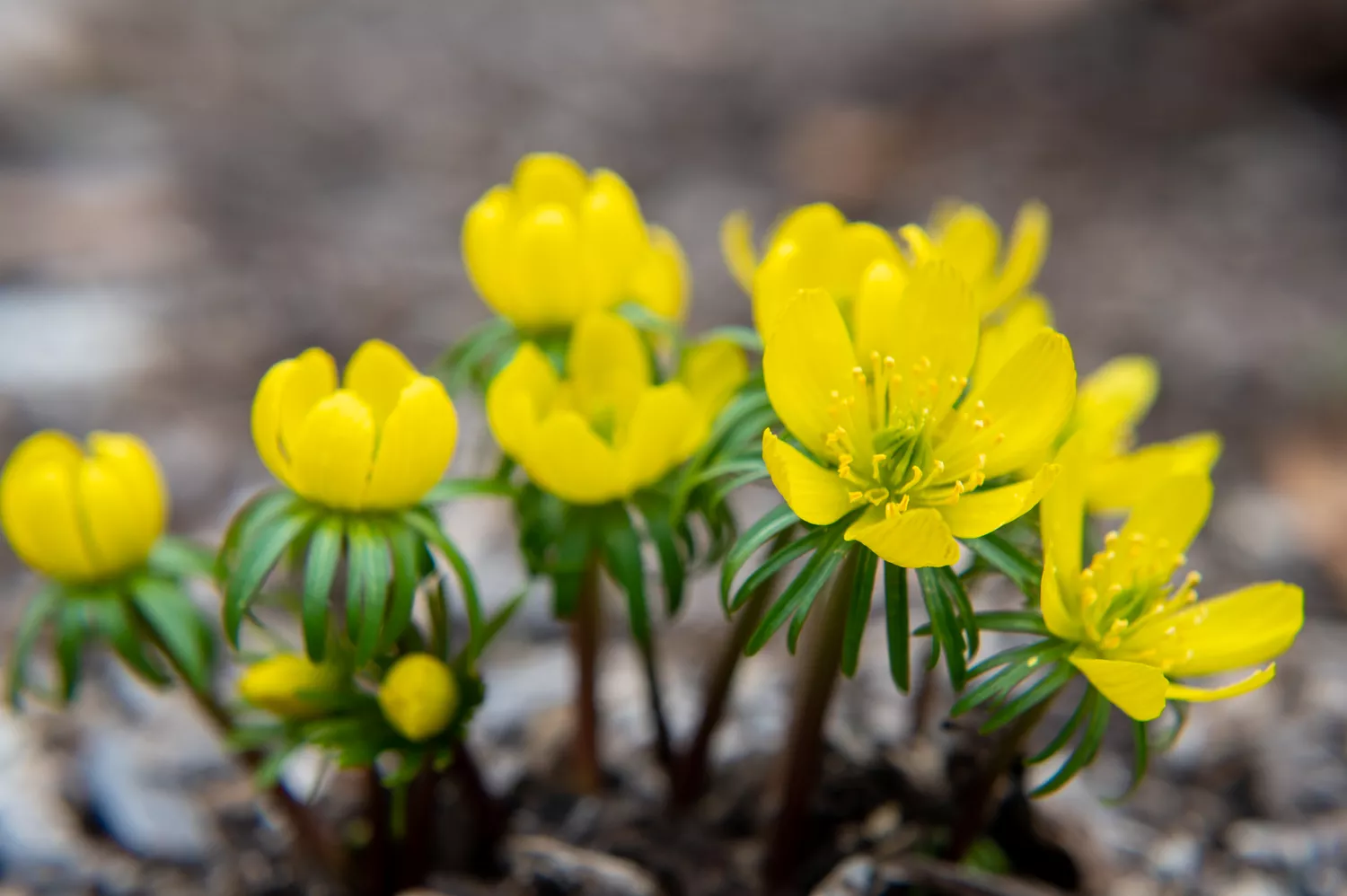
- Botanical name: Eranthis hyemalis
- Sun Exposure: Full sun to partial shade
- Soil type: moist, well-drained, rich
- Soil pH: Neutral to alkaline (7.0-8.5)
This woodland beauty blooms from late winter to early spring, producing cheerful, cup-shaped yellow flowers atop ruffled foliage. Plants grow from a tuber rather than a true bulb, but follow the same bloom-dormancy cycle as spring-blooming bulbs. Southeastern plants thrive in partial shade conditions, where soil moisture is consistent. Winter aconite is perfect for naturalizing in woodland gardens.
grape hyacinth
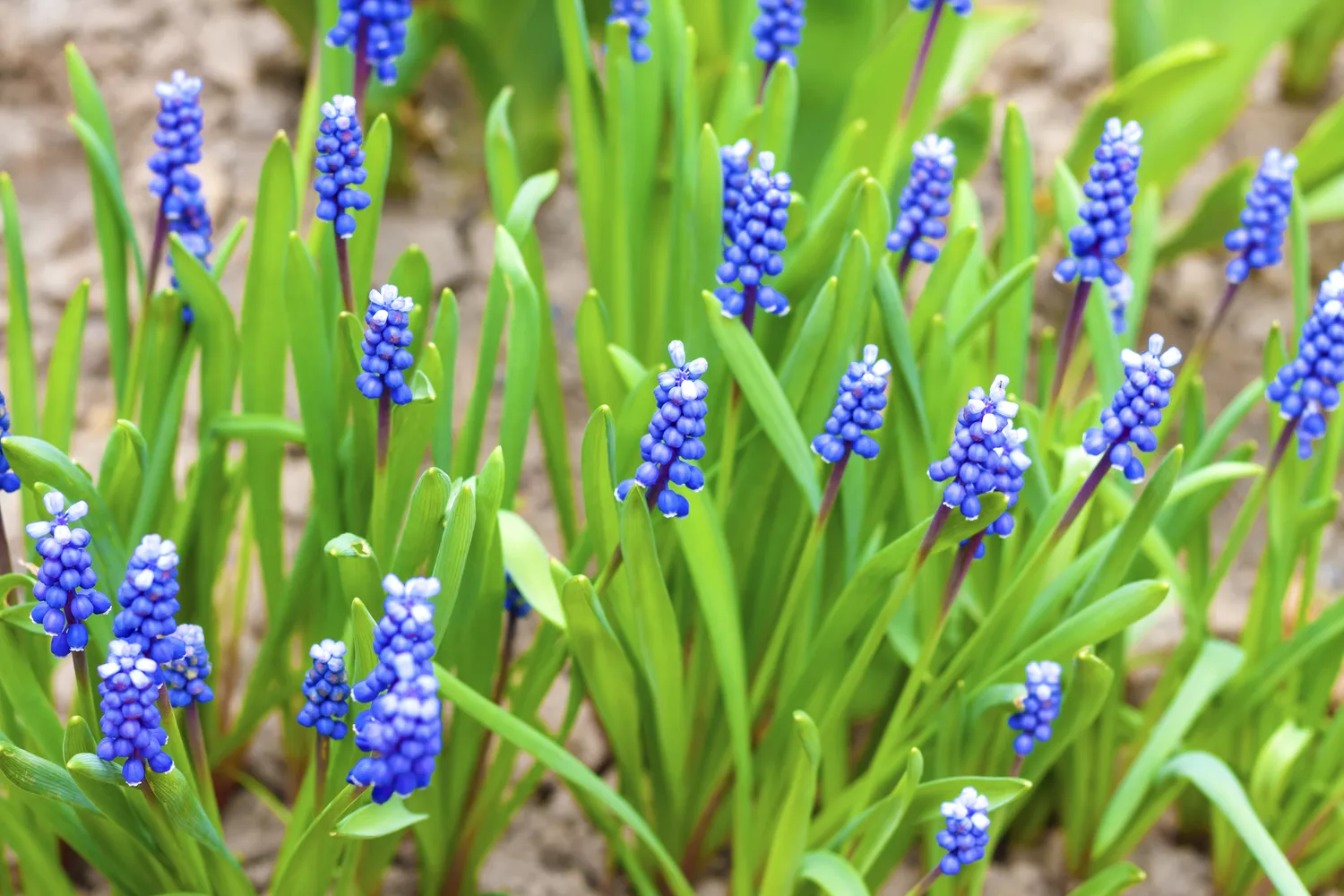
- Botanical name: Muscari armeniacum
- Sun Exposure: Full sun to partial shade
- Soil type: medium, well-drained, medium fertility
- Soil pH: slightly acidic to neutral (6.0-7.0)
This delightful bulb gets its name from its dense, violet-blue flowers that resemble a cluster of grapes. The individual flowers are bell-shaped and provide a rich source of pollen for native bees. Grape hyacinth naturalizes easily in lawns and under trees, producing splashes of color in mid-spring.
Summer snowflake
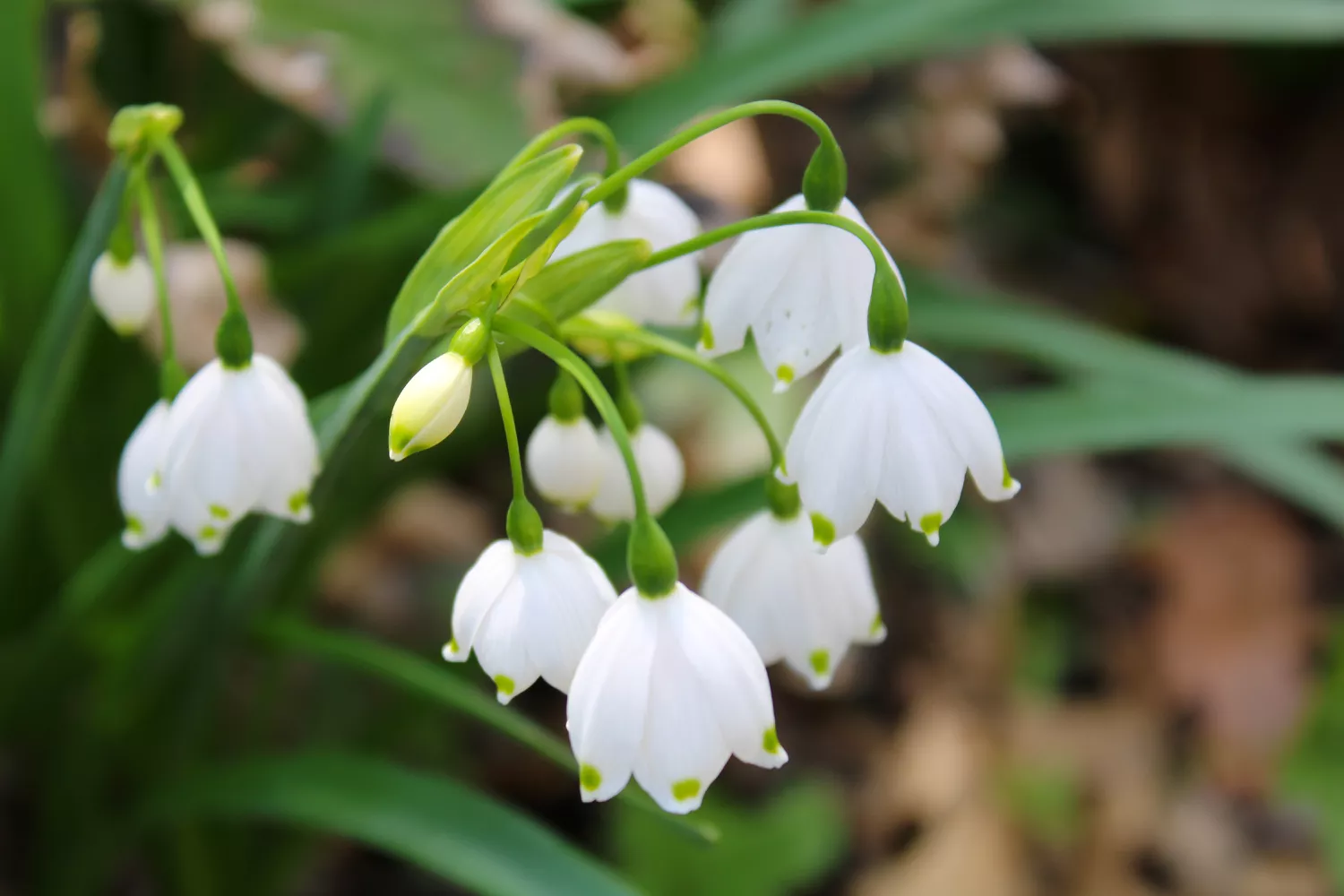
- Botanical name: Leucojum aestivum
- Sun Exposure: Full sun to partial shade
- Soil type: medium, well-drained, rich
- Soil pH: Acidic to alkaline (5.5-8.5)
Perfect for massing beneath deciduous trees and shrubs, summer snowflakes naturalize to form large mounds that put on a stunning display of spring flowers (not summer flowers, as their common name suggests). The pendulous, bell-shaped blooms sport white petals with green dots along the edge. The plants tolerate moist soils and look lovely along stream banks.
Dutch iris
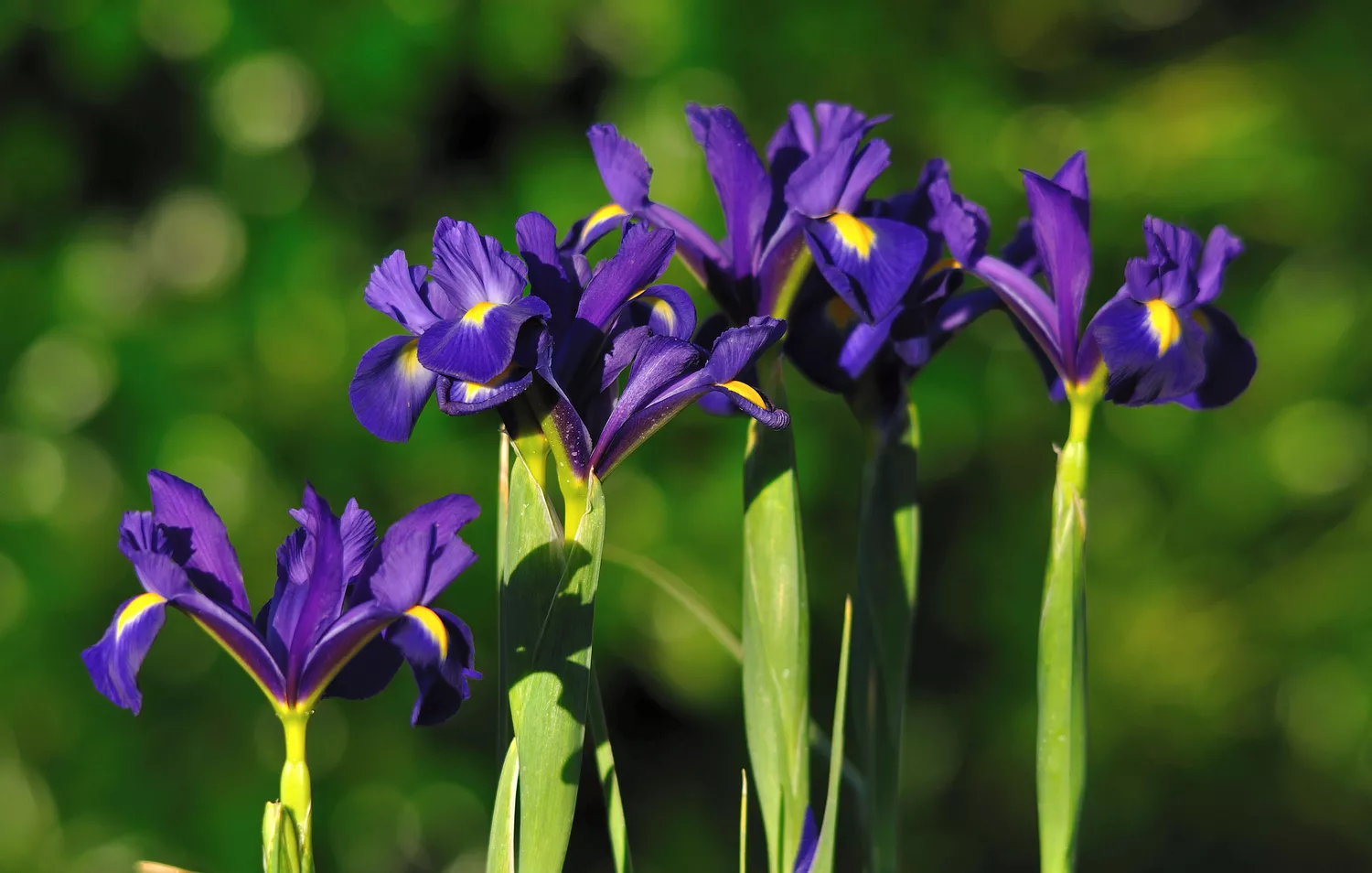
- Botanical name: Iris hybrids (Dutch hybrid group)
- Sun Exposure: Full sun to partial shade
- Soil type: medium, well-drained, medium fertility
- Soil pH: Acidic (5.5-6.5)
A favorite among florists, the Dutch iris blooms toward the end of spring with beautiful purple, yellow, or white flowers. Despite its name, the Dutch iris originated from species native to Spain, Morocco, Portugal, and other Mediterranean countries. Unlike most irises, these darlings grow from a bulb, not a rhizome. They are easy to grow, resist deer browsing, and tolerate black walnut trees.
Chess flower
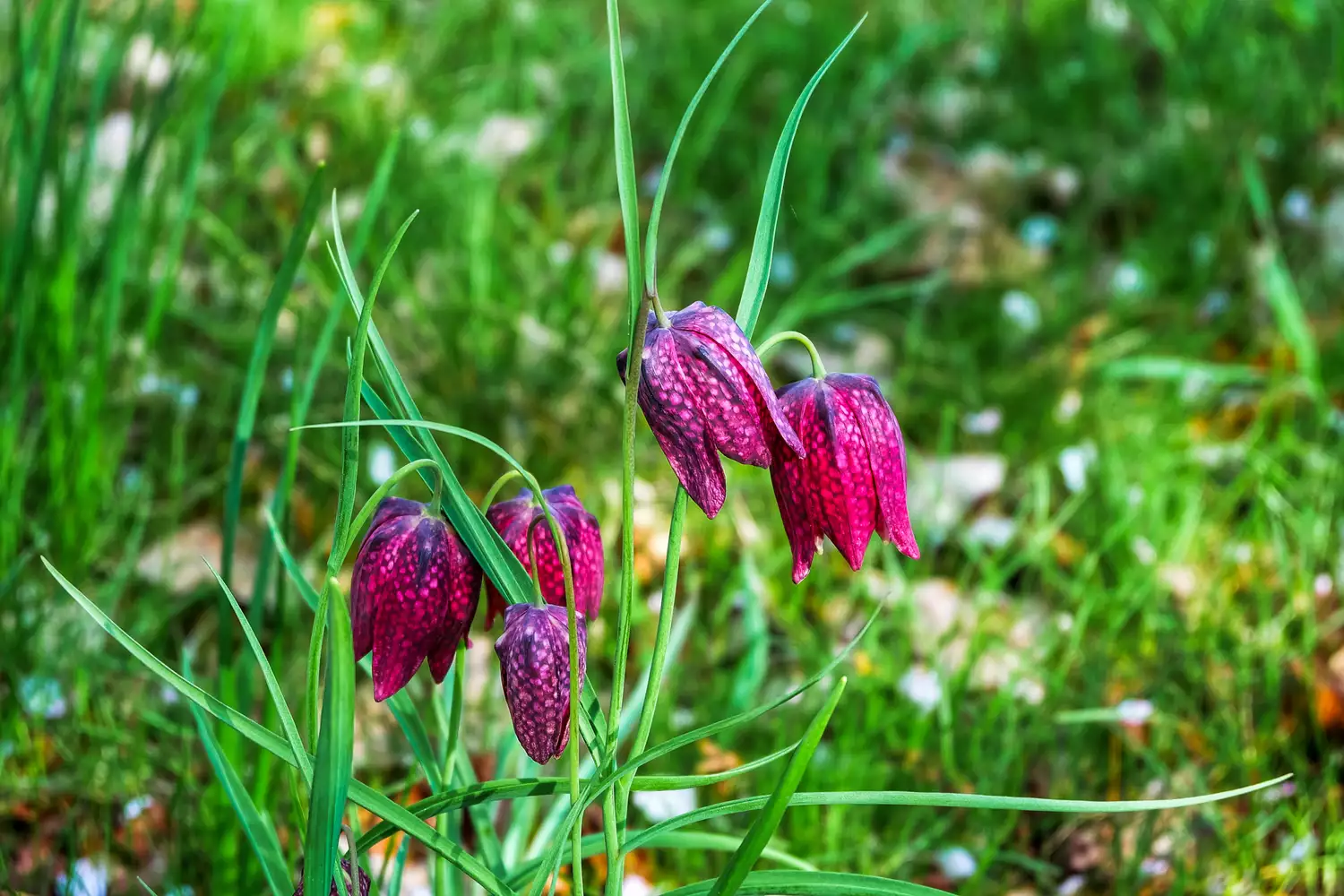
- Botanical name: Fritillaria meleagris
- Sun Exposure: Partial shade to dappled sun
- Soil type: medium to moist, well-drained, rich
- Soil pH: slightly acidic to slightly alkaline (6.1 – 7.8)
The delicate, bell-shaped flowers of the checkerboard lily get their name from their unusual checkerboard markings that add a touch of whimsy to the spring garden. Place this bulb along paths or at the front of borders, where you can admire the beautifully veined petals in shades of burgundy, purple, white and grey. Checkerboard lily bulbs have an unusual shape that tends to capture water, which can cause the bulbs to rot. Plant the bulbs on their side in well-drained soil to avoid this problem.
White Squill

- Botanical name: Scilla mischtschenkoana
- Sun Exposure: Full sun to partial shade
- Soil type: medium to moist, well-drained, rich
- Soil pH: Acidic to slightly alkaline (5.5-8.0)
Easy to grow in typical garden soils, white squill blooms early, producing flowers from late winter to early spring. The star-shaped blooms are produced in loose, upright clusters. Each white to pale blue petal has a distinctive dark blue line along its center. Use white squill to edge paths or plant it in masses beneath trees and shrubs. Avoid the closely related Siberian squill ( Scilla siberica ), which is invasive in several states.
wind flower
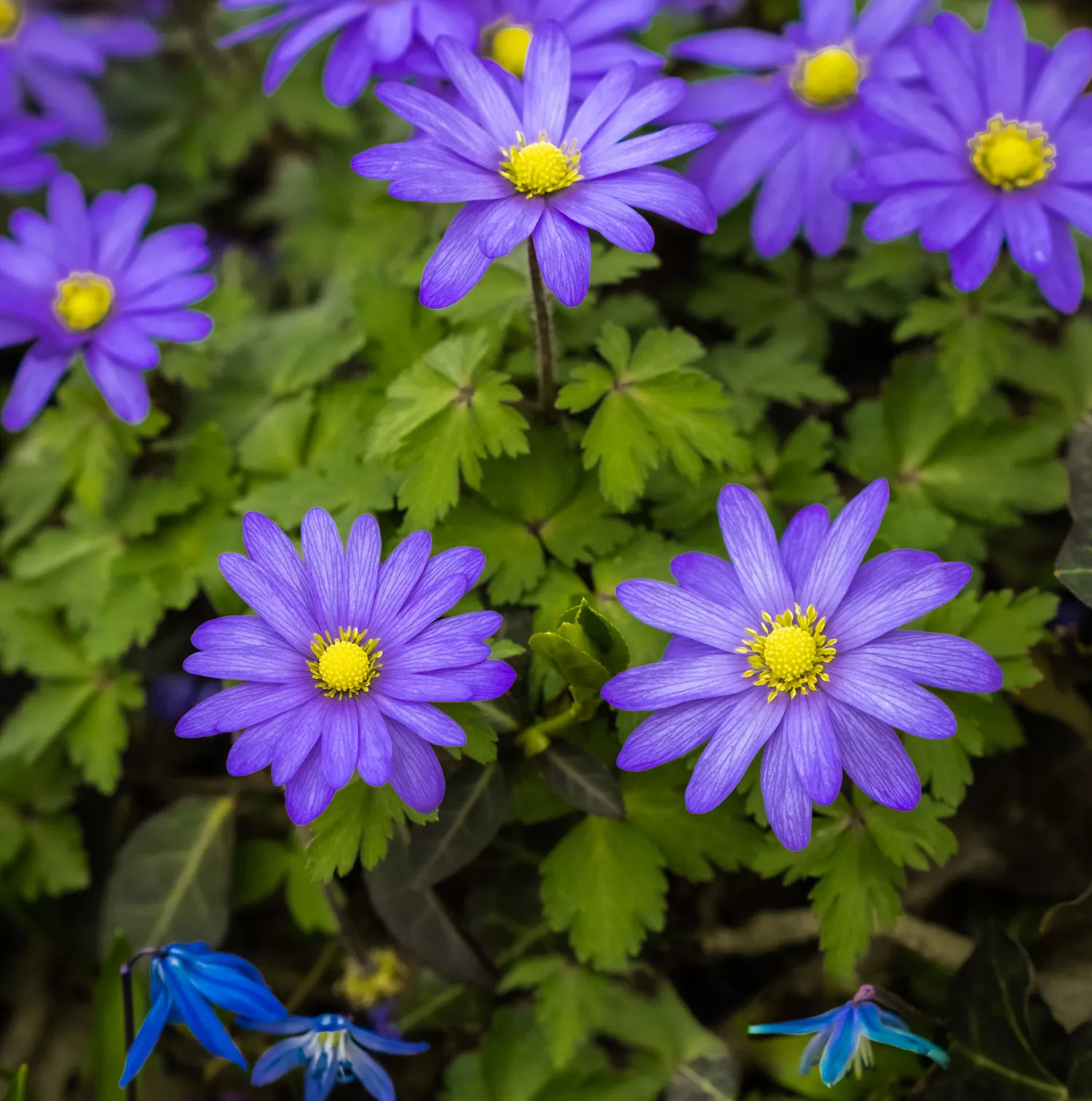
- Botanical name: Anemonoides (Anemone) soft
- Sun Exposure: Full sun to partial shade
- Soil type: medium, well-drained, rich
- Soil pH: Acidic to alkaline (5.0-8.5)
With deeply cut foliage and showy flowers, windflower looks stunning in large expanses along woodland edges, mixed borders and rock gardens. Flowers range from deep blue, purple and burgundy to pink or white and are a favourite spring cut flower. Plant as a skirt beneath taller spring flowering bulbs such as daffodils. Plants naturalise well and tolerate black walnut trees.
snowdrops
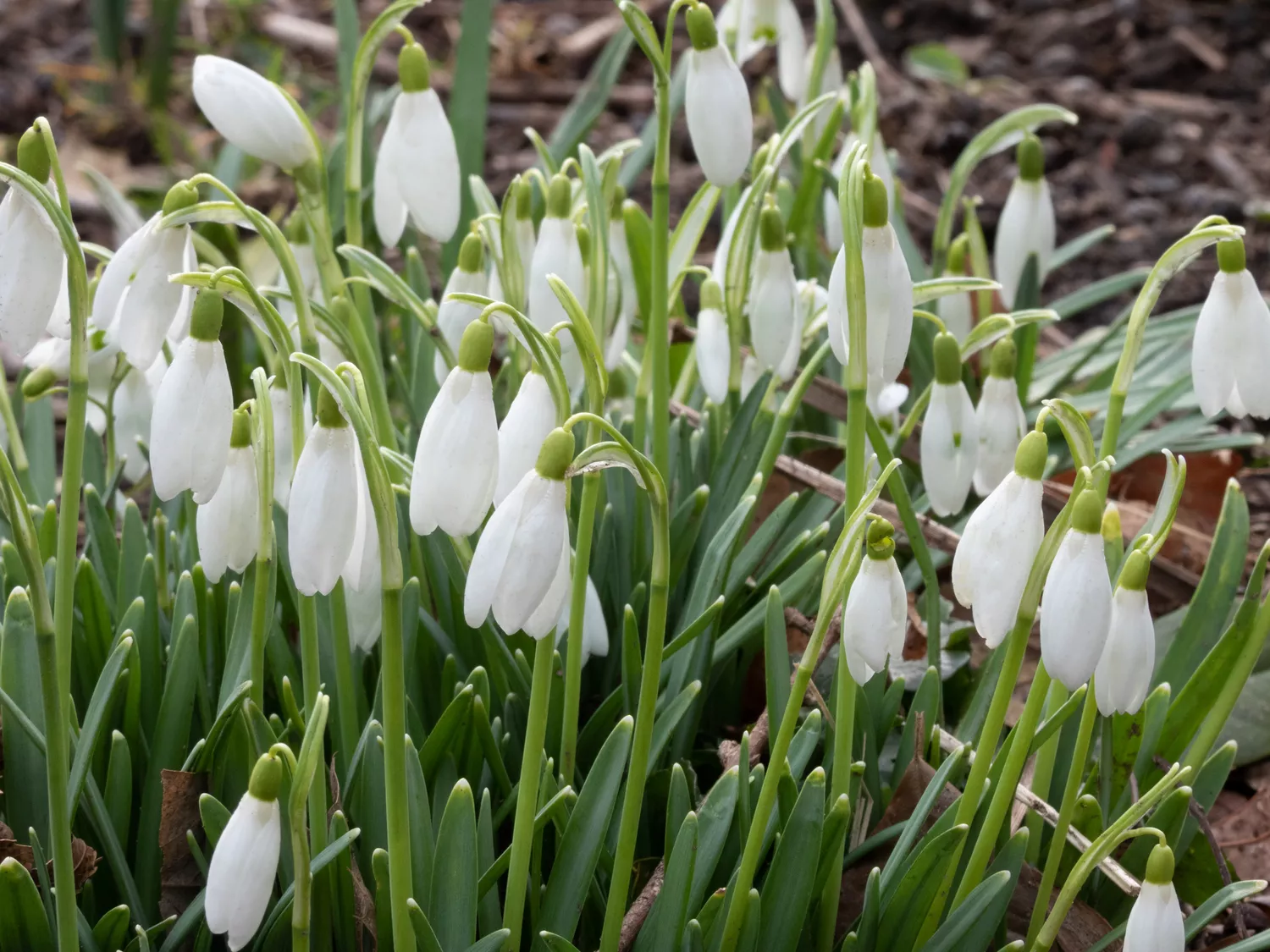
- Botanical name: Galanthus nivalis
- Sun Exposure: Full sun to partial shade
- Soil type: average, well-drained, medium
- Soil pH: slightly acidic to slightly alkaline (6.0-8.0)
Snowdrops, named for the time of year they bloom, are among the first spring (late winter) bulbs to bloom, producing white, honey-scented, bell-shaped flowers as early as February. Snowdrops naturalize easily and are best planted in mounds along woodland edges or beneath large trees. Place groups in rock gardens or along paths. The plants tolerate clay soil and grow well beneath black walnut trees.
Wild Hyacinth
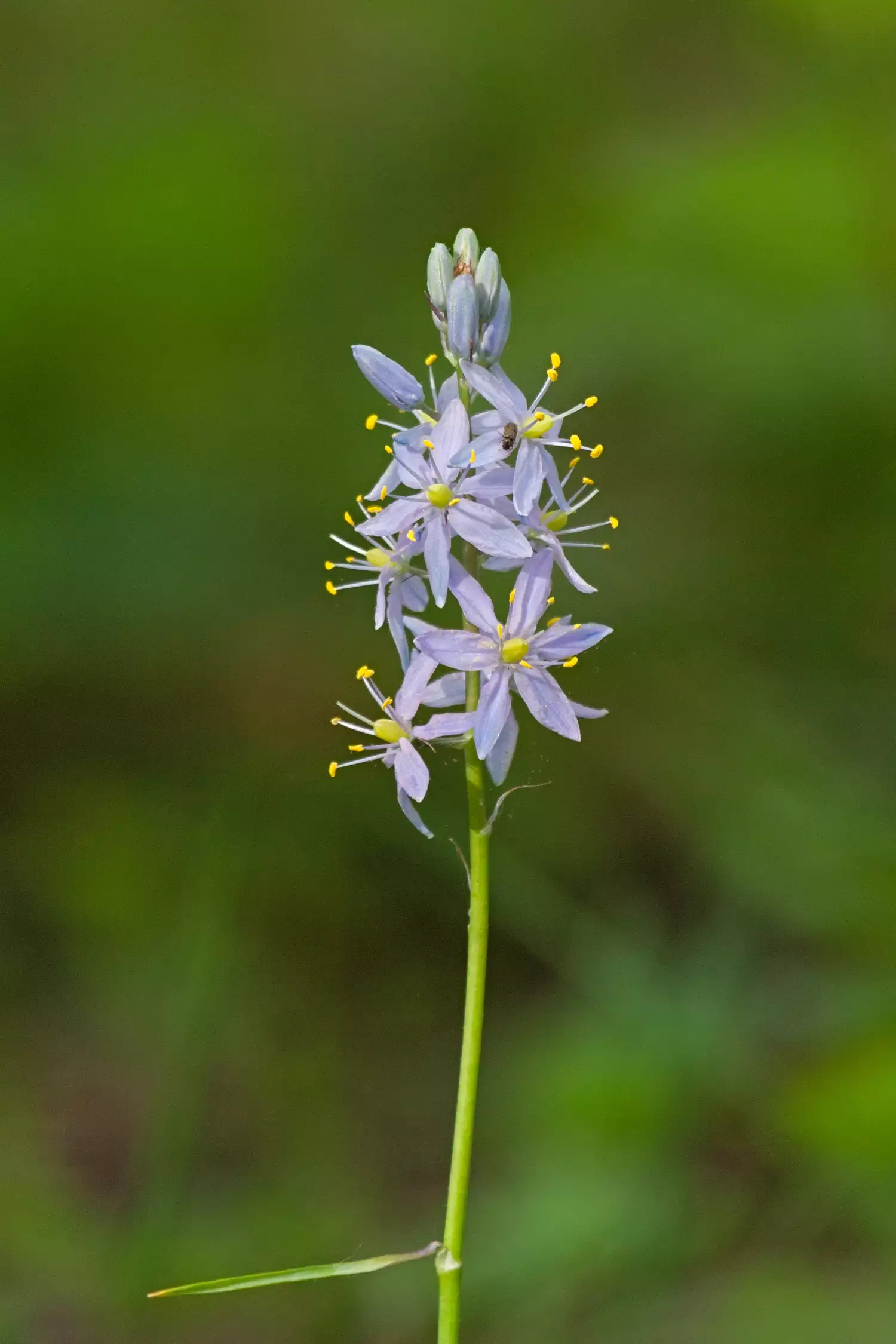
- Botanical name: Camassia scilloides
- Sun Exposure: Full sun to partial shade
- Soil type: moist, well-drained, rich
- Soil pH: Acidic to neutral (5.0-7.2)
This native wildflower is a member of the lily family that produces stunning spikes of fragrant flowers in shades of pale blue, pink, or white. The flower spikes open sequentially from bottom to top, with approximately twenty flowers per stem. These showy blooms make excellent cut flowers and attract bees, butterflies, and other native pollinators. The plants require good moisture to bloom, but will tolerate drier soil when dormant.
Golden spider lily

- Botanical name: Lycoris aurea
- Sun Exposure: Full sun to partial shade
- Soil type: medium, well-drained, medium fertility
- Soil pH: Neutral to slightly alkaline (7.0-8.0)
Although they bloom from late summer through fall, these flowering bulbs are usually planted in the fall because they need plenty of time to become established. In fact, you may not see flowers until the second growing season, but the showy blooms are worth the wait. The flowers, which bloom in a rich golden yellow hue with recurved petals and showy stamens, are adored by butterflies, bees, and hummingbirds.
Spring Star Flower

- Botanical name: Ipheion uniflorum
- Sun Exposure: Full sun to partial shade
- Soil type: medium, well-drained, medium fertility
- Soil pH: Acidic to neutral (5.5-7.0)
This delicate flower grows to just six inches tall and makes a beautiful edging for pathways. The flowers are typically pale blue to lavender, darkening along the midrib and toward the tip of each petal. Pink and white cultivars are also available. The spicy-scented flowers are good for cutting and naturalizing in lawns, borders, and woodland gardens.





